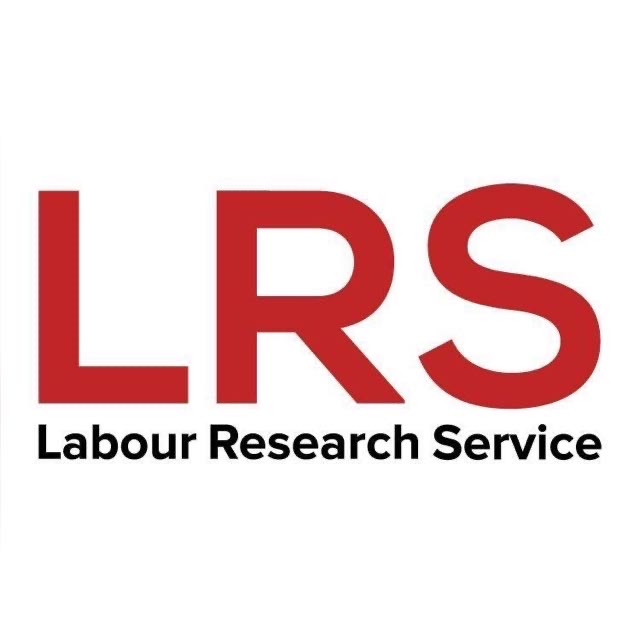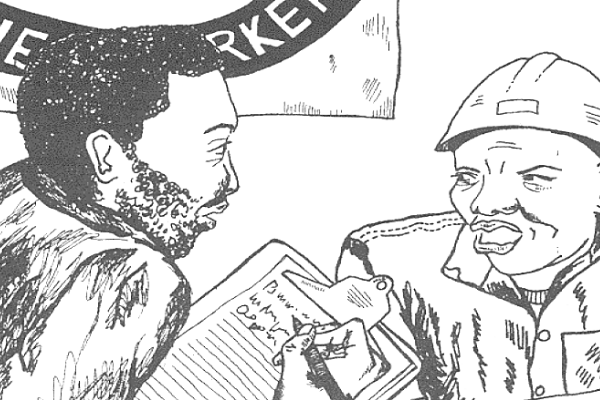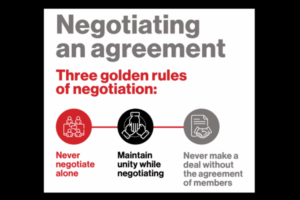A primary responsibility of a shop steward is to represent union members throughout the grievance processes and hearings in the workplace.
Grievance hearings occur when a worker raises a complaint concerning the actions of the employer, other workers, or the general working conditions. The employer must safeguard the aggrieved worker from any form of victimisation.
Grievances typically fall into two categories: collective grievances, which pertain to broader issues such as working conditions and employer policy adherence, and individual grievances, involving complaints from a single worker against the employer or colleagues. An individual’s grievance can evolve into a collective one if it concerns broader workplace concerns, like health and safety.
Shop stewards and workers use the grievance procedure to advocate for change and promote workplace democracy, with collective action being the most effective approach.
Steps to address grievances
1. Understand the issue
Identify all affected parties and gather relevant information, including dates, individuals involved, and reasons for dissatisfaction. Sometimes, a single complaint may encompass multiple underlying issues, necessitating a thorough understanding of the situation.
2. Explore solutions
Engage members in brainstorming potential solutions for each identified issue. Consider different options, whether maintaining existing rights or negotiating new ones, while keeping the overall goal in mind.
3. Evaluate solutions
Rank potential solutions from best to worst for each issue, facilitating informed decision-making.
4. Clearly state the grievance
Present the grievance as a problem with proposed solutions rather than as a demand, ensuring clarity on who is affected, the nature of the complaint, and the proposed resolution.
5. Present the grievance
Follow the agreed-upon grievance procedure involving management, shop stewards, and affected parties. Request lower-level meetings if feasible, ensuring the presence of the aggrieved member in individual cases.
6. Seek a response
Request a timely response from management and negotiate solutions during meetings. Escalate the matter if there is no satisfactory solution.
7. Further action
If initial attempts fail, repeat the process or consider holding demonstrations to express your concerns to the management.
8. Declare a dispute
Follow established dispute procedures or seek assistance from union organisers to declare a dispute and hold a meeting with management.
9. Tactics for resolution
Discuss potential strategies, including mediation, arbitration, or industrial action and involve workers in decision-making.
10. Formalise agreements
Ensure agreements are documented in writing and signed by both parties, with a clear understanding of the terms.
Tips for interacting with management
Tips for interacting with management:
- Prioritise grievances based on member concerns.
- Set reasonable deadlines and maintain a problem-solving approach.
- Remain persistent despite potential delays.
- Foster member support through petitions and demonstrations.
- Facilitate negotiations between management and shop stewards, avoiding direct worker involvement.
Key considerations in grievance procedures
1. Simplified steps: Keep the process straightforward. Management may attempt to complicate it with unnecessary steps as a delaying tactic.
2. Time constraints: Establish time limits to prevent management from dragging out the process indefinitely.
3. Shop steward involvement: Involve shop stewards at every stage. Every grievance should be a collective concern.
4. Branch committee and union organiser involvement: At later stages, involving branch committees and union organisers strengthens the union’s position.
5. Dispute resolution as final stage: Reserve dispute resolution for the final stage of the grievance procedure.
6. Avoiding bosses’ final authority: Prevent bosses from having the ultimate decision-making power.
By following these steps and tips, shop stewards can effectively address grievances and advocate for the rights and interests of union members in the workplace.
Source: Basic Shop Steward Manual, World Workers Media Productions.
Reference: Basic training materials for shop stewards, National Union of Mineworkers.







